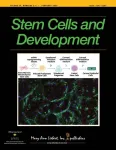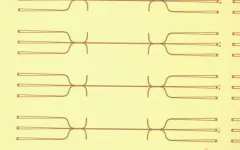(Press-News.org) A scientific technique that rapidly increases the body’s production of anti-inflammatory cells promoted healing from heart attacks in mice, according to a new study by investigators from the Smidt Heart Institute at Cedars-Sinai. Once adapted to treat humans, the technique could potentially be used to repair heart muscle damage after a heart attack and be applied to a variety of inflammatory disorders.
The investigators’ findings were published in the peer-reviewed Journal of Clinical Investigation.
Heart attacks occur when the heart muscle is damaged by reduced blood flow from one or more arteries. They strike more than 800,000 people in the U.S. each year and are a leading cause of death. The new technique, as described in the study, addresses a major challenge to treating this disorder: uncontrolled inflammation.
“Thanks largely to medical advances, more than 90% of people in the U.S. survive their heart attacks,” said Eduardo Marbán, MD, PhD, executive director of the Smidt Heart Institute at Cedars-Sinai and the study’s senior author. “But a significant percentage of these patients suffer tissue damage when their immune systems overreact. This can trigger inflammation, which weakens the heart and raises the risk of heart failure.”
To solve this problem, the study’s investigators focused on increasing the body’s supply of regulatory T-cells (Tregs), which modulate the immune system and help keep it from overreacting to injuries. A number of clinical trials involving various diseases have sought to accomplish this goal through a weekslong process of extracting these rare cells from a patient, expanding them in the laboratory and infusing them back into the patient. But this method is too slow to help in an acute crisis like a heart attack.
Cedars-Sinai investigators wondered: What if we could stimulate the body to boost its own production of Tregs? The new method that they developed achieves this goal in mice through infusions of extracellular vesicles that overexpress an RNA molecule called BCYRN1. Extracellular vesicles are small fluid-filled sacs containing bioactive substances that are secreted by cells and circulate in the bloodstream.
By performing laboratory experiments on human tissue samples, the investigators first discovered how BCYRN1 works to increase the number and activity of Treg cells. Acting on these findings, they infused extracellular vesicles containing overexpressed BCYRN1 into mice 15 minutes after the mice had heart attacks.
The data showed that mice that received the infusions had more Tregs in their hearts and sustained less cardiac tissue damage and inflammation from the heart attacks than did mice that did not receive such infusions. Their hearts also retained more of their pumping power.
“These results reveal the important role of BCYRN1 in reducing inflammation and damage from heart attacks,” said Ke Liao, PhD, a project scientist in the Smidt Heart Institute at Cedars-Sinai and first author of the study. “They also validate the effectiveness of using extracellular vesicles to deliver these benefits in mice.”
The extracellular vesicles used in the study were produced by cardiosphere-derived cells, or CDCs, which naturally contain high levels of BCYRN1. These progenitor cells, derived from human heart tissue, were developed by Marbán over many years of work.
“Although this Smidt Heart Institute study was performed on animals, its findings have the potential to generate new and exciting immunotherapies,” said Jeffrey A. Golden, MD, director of the Burns and Allen Research Institute and executive vice dean for Research and Education at Cedars-Sinai. “These therapies could have applications not only for heart attacks but for lupus, organ transplant rejection and other human disorders.”
Other Cedars-Sinai authors include: Jiayi Yu, Akbarshakh Akhmerov, Zahra Mohammadi Goldar, Liang Li, Weixin Liu, Natasha Anders and Ahmed G.E. Ibrahim.
Funding: KL was supported by a training grant from the National Heart, Lung, and Blood Institute (T32 HL116273). This work was funded by NIH (R01HL168296 to E.M.) and the California Institute for Regenerative Medicine (CIRM DISC2-14899 to K.L.). E.M. holds the Mark S. Siegel Family Foundation Distinguished Chair of the Cedars-Sinai Medical Center. JY was supported by Tsinghua University. We thank all other members of the Marbán Laboratory for their support, and the Cedars-Sinai Medical Center Flow Cytometry Core. We acknowledge the use of BioRender for the preparation of figures in this manuscript.
Conflict of interest: E. Marbán owns founder’s equity in Capricor Therapeutics.
END
Preclinical study: after heart attack, a boost in anti-inflammatory cells promoted healing
Results could lead investigators toward new treatments for inflammation.
2025-03-26
ELSE PRESS RELEASES FROM THIS DATE:
Glucose revealed as a master regulator of tissue regeneration in Stanford Medicine study
2025-03-26
The sugar glucose, which is the main source of energy in almost every living cell, has been revealed in a Stanford Medicine study to also be a master regulator of tissue differentiation — the process by which stem cells give rise to specialized cells that make up all the body’s tissues.
It does so not by being catabolized, or broken down, to release the energy sequestered in its chemical bonds, but instead by binding in its intact form to proteins that control which genes in the genome are made into proteins and when.
The discovery of glucose’s undercover double life was so surprising the researchers ...
Open-label placebo appears to reduce premenstrual symptoms, study suggests
2025-03-25
Women affected by premenstrual syndrome (PMS) appear to experience less intense and debilitating symptoms after taking placebo pills even when told they do not contain any active medication, suggests a study published in the open-access journal BMJ Evidence-Based Medicine.
PMS can result in significant distress for women of reproductive age and cause psychological symptoms such as irritability, depressed mood, and mood swings as well as physical symptoms including breast tenderness, bloating, and joint pain.
Women ...
New mums advised to do two hours of moderate to vigorous exercise a week
2025-03-25
New mums should be strongly encouraged to begin clocking up at least two hours of moderate to vigorous intensity physical activity such as brisk walking and muscle strengthening exercises each week in the first three months after birth, when physically able, to improve health and well-being, say experts in a new guideline published by the British Journal of Sports Medicine.
They also strongly recommend daily pelvic floor muscle training to reduce the risk of urinary incontinence, and taking steps to improve sleep ...
Milk as Medicine: New Study Shows Breast Milk Transforms Challenges into Triumphs
2025-03-25
OKLAHOMA CITY – In 2010, University of Oklahoma researcher David Fields, Ph.D., was pouring over research data when he discovered something he thought was odd: His data showed that at 6 months of age, formula-fed babies born of mothers who were categorized as medically obese weighed about 5% units less fat than breastfed babies in the same dataset. That discovery struck him as unusual and led him on a research journey to better understand breast milk. Now, he’s studying the connections between maternal gestational diabetes, breastfeeding and infant health.
Fields is part of the research team behind a recent study ...
CU Cancer Center researchers identify the ‘switch’ that allows intestinal cells to regenerate after injury
2025-03-25
Researchers from the University of Colorado Cancer Center have solved a cellular mystery that may lead to better therapies for colorectal and other types of cancer.
Peter Dempsey, PhD, professor of pediatrics–developmental biology in the CU School of Medicine, and Justin Brumbaugh, PhD, assistant professor of molecular, cellular, and developmental biology at CU Boulder, recently published a paper in the journal Nature Cell Biology showing the importance of the H3K36 methylation process in regulating plasticity and regeneration in intestinal cells.
“The intestine has an ...
Special issue of Academic Emergency Medicine explores the science of errors in emergency care
2025-03-25
Des Plaines, IL — Academic Emergency Medicine (AEM), the peer-reviewed journal of the Society for Academic Emergency Medicine (SAEM), has published its March issue dedicated to the topic of errors in emergency care, with a strong emphasis on diagnostic error. This special issue, supported by the Agency for Healthcare Research and Quality (AHRQ), brings together leading scholars and clinicians to discuss aspects of errors relevant to emergency care and propose actionable solutions.
Following the landmark 2015 National Academies report, “Improving Diagnosis in Healthcare,” national awareness of diagnostic errors has increased significantly. Errors—ranging from ...
Organoid fusions as models to study meninges-brain signaling
2025-03-25
A new study in the peer-reviewed journal Stem Cells and Development describes the development of a co-culture system of neural organoids generated from human induced pluripotent stem cells (iPSCs) fused with fetal leptomeninges from mice with fluorescently labeled meninges, called leptomeningeal neural organoid (LMNO) fusions. Click here to read the article now.
Vivian Gama, PhD, from Vanderbilt University, Julie Siegenthaler, PhD, from University of Colorado Anschutz Medical Campus, and coauthors, present a proof-of-concept study that tests the stability of the different cell types in the leptomeninges (fibroblasts and macrophages) and the fused neural organoid ...
A multimodal light manipulator
2025-03-25
Interferometers, devices that can modulate aspects of light, play the important role of modulating and switching light signals in fiber-optic communications networks and are frequently used for gas sensing and optical computing.
Now, applied physicists at the Harvard John A. Paulson School of Engineering and Applied Sciences (SEAS) have invented a new type of interferometer that allows precise control of light’s frequency, intensity and mode in one compact package.
Called a cascaded-mode interferometer, it is a single waveguide on a silicon-on-insulator ...
OU researcher leverages technology for alcohol disorder interventions in primary care
2025-03-25
OKLAHOMA CITY – According to the Centers for Disease Control and Prevention, 1 in 7 adults in the United States will experience a substance use disorder during their lifetime. University of Oklahoma College of Medicine faculty member Brandi Fink, Ph.D., is working with primary care clinics and health care systems to identify people with an alcohol use disorder and intervene early before the problem worsens.
Fink, an associate professor in the Department of Psychiatry and Behavioral Sciences, created an assessment for patients to fill out on an iPad while waiting for an appointment ...
Automated lead nurturing boosts sales—but only under the right conditions
2025-03-25
Businesses invest billions in marketing automation, and many assume that Automated Lead Nurturing (ALN) is a proven driver of sales. However, a new Journal of Marketing study reveals that ALN is not a one-size-fits-all solution. The research finds that while ALN improves engagement and enhances salesperson–lead interactions, its impact on sales conversions varies significantly across industries and customer segments.
Authored by Johannes Habel (University of Houston), Nathaniel Hartmann (University of South Florida), Phillip Wiseman (Texas Tech University), Michael Ahearne (University of ...
LAST 30 PRESS RELEASES:
Stardust study resets how life’s atoms spread through space
Practical education: Clinical scenario-based program development
The impact of family dynamics on eating behaviour – how going home for Christmas can change how you eat
Tracing the quick synthesis of an industrially important catalyst
New software sheds light on cancer’s hidden genetic networks
UT Health San Antonio awarded $3 million in CPRIT grants to bolster cancer research and prevention efforts in South Texas
Third symposium spotlights global challenge of new contaminants in China’s fight against pollution
From straw to soil harmony: International team reveals how biochar supercharges carbon-smart farming
Myeloma: How AI is redrawing the map of cancer care
Manhattan E. Charurat, Ph.D., MHS invested as the Homer and Martha Gudelsky Distinguished Professor in Medicine at the University of Maryland School of Medicine
Insilico Medicine’s Pharma.AI Q4 Winter Launch Recap: Revolutionizing drug discovery with cutting-edge AI innovations, accelerating the path to pharmaceutical superintelligence
Nanoplastics have diet-dependent impacts on digestive system health
Brain neuron death occurs throughout life and increases with age, a natural human protein drug may halt neuron death in Alzheimer’s disease
SPIE and CLP announce the recipients of the 2025 Advanced Photonics Young Innovator Award
Lessons from the Caldor Fire’s Christmas Valley ‘Miracle’
Ant societies rose by trading individual protection for collective power
Research reveals how ancient viral DNA shapes early embryonic development
A molecular gatekeeper that controls protein synthesis
New ‘cloaking device’ concept to shield sensitive tech from magnetic fields
Researchers show impact of mountain building and climate change on alpine biodiversity
Study models the transition from Neanderthals to modern humans in Europe
University of Phoenix College of Doctoral Studies releases white paper on AI-driven skilling to reduce burnout and restore worker autonomy
AIs fail at the game of visual “telephone”
The levers for a sustainable food system
Potential changes in US homelessness by ending federal support for housing first programs
Vulnerability of large language models to prompt injection when providing medical advice
Researchers develop new system for high-energy-density, long-life, multi-electron transfer bromine-based flow batteries
Ending federal support for housing first programs could increase U.S. homelessness by 5% in one year, new JAMA study finds
New research uncovers molecular ‘safety switch’ shielding cancers from immune attack
Bacteria resisting viral infection can still sink carbon to ocean floor
[Press-News.org] Preclinical study: after heart attack, a boost in anti-inflammatory cells promoted healingResults could lead investigators toward new treatments for inflammation.



